Ko-Hyoteki
Midget submarine attack on Pearl Harbor

 The popular account of Pearl Harbor records that the attack started at 0748hrs local time on 7th December 1941 when hundreds of Imperial Japanese Navy (IJN) aircraft appeared over the anchorage and started their attacks. This simplistic version of events suffices for school textbooks and Hollywood movies but the military engagements actually started nearly five hours earlier at 0357hrs. And these first encounters were not against aircraft, but a midget submarine!
The popular account of Pearl Harbor records that the attack started at 0748hrs local time on 7th December 1941 when hundreds of Imperial Japanese Navy (IJN) aircraft appeared over the anchorage and started their attacks. This simplistic version of events suffices for school textbooks and Hollywood movies but the military engagements actually started nearly five hours earlier at 0357hrs. And these first encounters were not against aircraft, but a midget submarine!
The Imperial Japanese Navy (IN) had reformed its pre-war special units before entering the war. In regards to midget submarines, Japan was at the cutting edge of technology with only Italy having similar midget submarines at this time which could be considered successful. Two experimental Ko-Hyoteki (‘Target-A’, a code name to hide their use as offensive weapons) midget submarines were ordered in 1939, based on the earlier 1930s design. These would be of a modified type that built on the experience of the first model and was closer to something that could be employed operationally.
Original artwork - CLICK for HIGH-RESOLUTION
Ko-Hyoteki midget submarine
Two torpedoes were mounted one above the other in the bow, intended for striking warships in open water in the opening stages of a conventional naval battle. This did not require a particularly long range so the power-plant was all-electric with no diesel engine for surface running or recharging. A small blade-like conning tower was added directly above the control room to allow for longer periscopes, which were 3m (10ft) long and an exact copy of the German Zeiss 30’. The periscope had two magnification settings of x1.5 and x6, and could be raised and lowered electronically. The control room also had a gyro compass and directional gyro which was visible from the top of the conning tower, and a radio with rubber protected aerial on top of the conning tower. The directional gyro had luminous paint so that it could be read in low light conditions. The hull form was narrower towards the bow to reduce weight and improve the boat’s hydrodynamics. The torpedo tubes had fenders to protect them from net defenses and a similar fender and blade system was added to the conning tower. The rudder and hydroplane assembly was designed so that it would not snag on the nets as it passed. The crews would carry two manual net cutters in reserve, but the basic concept was that the midget submarine would power through or under any nets it found. These modifications made the craft a bit slower underwater than the original prototype but it was still capable of 19kt, which is head and shoulders above other proper midget submarines even today.
The ultimate book of Special Forces subs Covert Shores 2nd Edition is the ONLY world history of naval Special Forces, their missions and their specialist vehicles. SEALs, SBS, COMSUBIN, Sh-13, Spetsnaz, Kampfschwimmers, Commando Hubert, 4RR and many more.
Check it out on Amazon
Preperation
Up until this point the Ko-hyoteki had been intended to enage enemy battleships in open water as part of a major naval battle. The use of anchored targets in exercises was purely for convenience and basic training, being much easier than attacking moving targets. Now someone proposed that the Ko-hyoteki could also be employed to attack enemy battleships and other shipping in harbor. At the same time, the crewmen suggest the use of ‘mother submarines’ in place of surface ships to improve stealth. This had not been such an issue in the full-fleet action scenarios under which the midget submarines had been conceived, but presented a very real problem if the craft were to be employed in sneak attacks on enemy harbors.
Within a few weeks, the employment of midget submarines was being seriously considered within the IJN, with possible sneak attacks on Hong-Kong, Manila, Pearl Harbor, San Francisco, Singapore and Sydney all considered.
It was no coincidence that the IJN was actively planning the surprise attack on the US Navy in the Pacific as part of an opening move of their entry into World War Two. Admiral Yamamoto did not favor war but, being responsible for the plans, favored attacking Pearl Harbor with aircraft. Like other navies, the IJN still believed battleships were at the top of the naval food chain. The attack was planned for the winter of 1941-42 and would be spearheaded by six aircraft carriers launching up to 414 aircraft. As originally planned, there was no role for the midget submarines but this was soon to change. By now, there was plenty of enthusiasm for the midget submarines within the IJN, with many of the early doubters now converted. Pearl Harbor was a very shallow harbor, too shallow, in fact, for an ordinary submarine to enter submerged but a midget submarine might be able to sneak in undetected. Reticence in using them therefore centered not around their expected utility, but in the problem of how to rescue the crewmen after the attack, as this was not envisioned as a suicide mission. The midget submarine lobby persisted and a test was planned for September 1941 in which the Ko-hyoteki would simulate an attack on a defended harbor near the Japanese main island of Shikoku. Unknown to the operators, the defended harbor closely resembled Pearl Harbor. The exercise was successful with the craft managed to rendezvous with their mother-ship after the attack.
The IJN’s top brass were now convinced, but the development of submarines as mother-ships would have to be accelerated. Within a couple of months the midget submarines had been integrated into specially modified C-Type cruiser submarines. Although the C-Type was quite large, the midget submarine itself was over 20m long so each parent submarine could only carry a single Ko-hyoteki on the aft casing. The Ko-hyoteki was mounted on a cradle facing aft with the rudder and hydroplanes secured to stop them moving as the submarine passed through the water. In a particularly clever trick that is still rare even today, the midget submarines were fitted with a hatch in the bottom which allowed them to mate with a similar hatch on the top of the submarine. This allowed the submarine crew to enter the midget submarine whilst submerged and greatly eased maintenance and readiness whilst also allowing the midget submarines to be released underwater to preserve stealth. The benefit of this arrangement on operational efficiency cannot be underestimated. More Ko-hyoteki had by now joined the first two in service and five, together with their mother submarines, were available for the attack on Pearl Harbor.

Whilst the five C-Type submarines were being modified two Ko-Hyoteki officers visited Hawaii as ‘tourists’ to conduct their own reconnaissance of Pearl Harbor. On 6th November, the submarines were moved to the major naval base at Kure near Hiroshima, which is sheltered from the open sea by numerous rocky islands. The loading of the midget submarines was conducted under tight security with black canvas covers obscuring what exactly was being loaded. Most of the submarine crews were completely unaware of what was going on. The submarines, now designated the 1st Special Attack Corps, slipped quietly out to sea on 28th November heading for Pearl Harbor, 4,400 miles (7,100km) away.
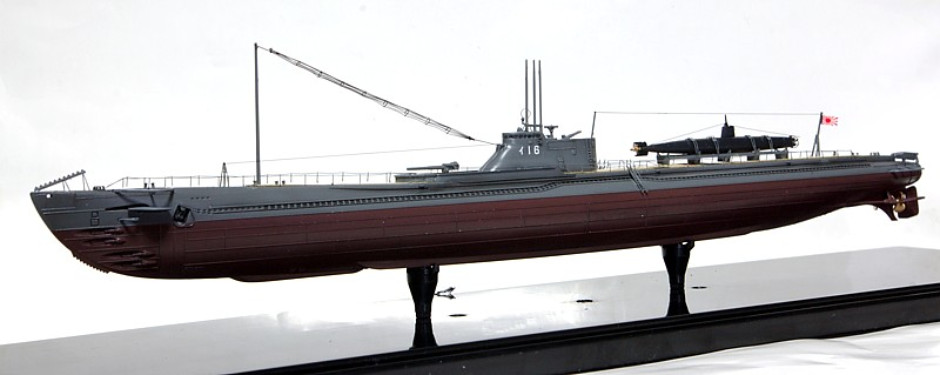
High detail model of cruiser submarine I-16 with Ko-Hyoteki aboard from a Japanese blog. Note that the submarine points aft.
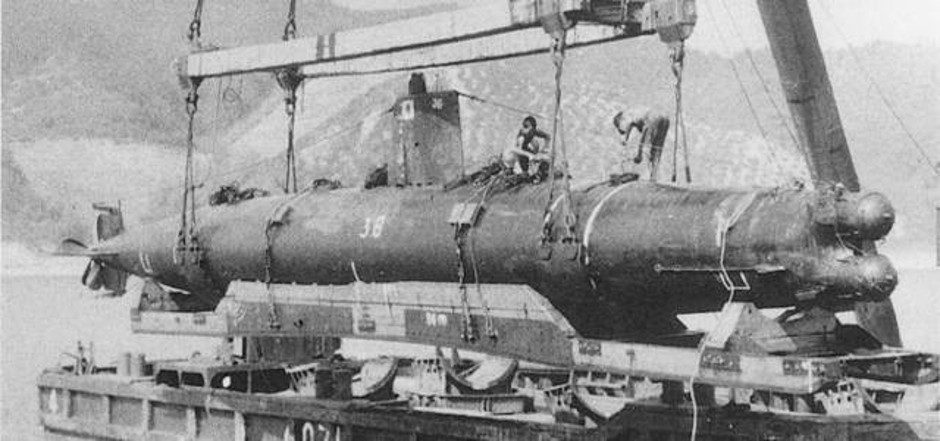
A Ko-Hyoteki on a submarine cradle. This example is boat HA-38 from 1944
Final Preperations
On 6th December, the crews made ready to launch. The crewmen made their wills and left small packages for their families in case they did not return. At least one crewman made a more personal note in his captain’s log which was recovered and translated into English. It read:
I have many recollections from my childhood. Today I will shoulder one important mission and, diving into Pearl Harbor, will sink the enemy’s warships. I was born a man in our country and the present daring enterprise is really the peak of joy for me. Disregarding the hardships and bitter dangers of the past year, I have trained for, and now the time has come when I will test my ability here.
These torpedo tubes are the pick of our navy. Moreover, they are the result of the wisdom and skill of several tens of thousands of Japanese. In the present operation the strength of the crew is even more prepared than the torpedoes and certainly we are all completely affected by a feeling of self-sacrifice.
The crew loaded their pistols and officer’s katana (swords), woolen blankets, a duffle bag, flashlights, mirrors for signaling and other small items. They had aircrew rations; bread, fruit, chocolate and alcohol (likely sake rice wine). That evening they boarded the midget submarines through the lower hatches and went through the intricate procedures for underwater launch. The crews wore life jackets during launch in case something went wrong. In a sign of haste uncharacteristic with the careful preparations, this procedure does not appear to have been tested beforehand, at least not extensively, but fortunately for those involved it worked as planned.
Get The essential guide to World Submarines
This Covert Shores Recognition Guide Covers over 80 classes of submarines including all types currently in service with World Navies.
Check it out on Amazon
Attack
Shortly after midnight local time on 6th December, the five midget submarines parted company with their parents about eight miles from the harbor entrance. They moved independently since there was no way to maintain a formation, aiming for Battleship Row. Japanese intelligence before the attacks was excellent and the Ko-Hyoteki crews received final information while still on board the parent submarines informing them that five battleships, three light cruisers and sixteen destroyers had entered the harbor. This was actually incorrect (there were eight battleships, eight cruisers, 30 destroyers, 4 submarines and 50 other ships) but this was much better intelligence than most other midget submarines and frogmen would receive before attacks. Each crew also had a very decent map of the harbor with depths (soundings) marked on it.
One of the Ko-Hyoteki immediately started to experience problems with its trim and gyro, and had to make the attack with its periscope raised. At 0357hrs one of three Bird class minesweepers patrolling the entrance, Condor, spotted a ‘stick-like’ object near the harbor buoy heading towards Barber’s Point, which is some way off to the west of the harbor. This object was almost certainly one of the midget submarines, although it is not clear if it was lost or simply tracking west to go around the buoy or patrol vessels. Condor raised the alarm to the better equipped USS Ward nearby which closed in to conduct a sonar sweep. Nothing was found.
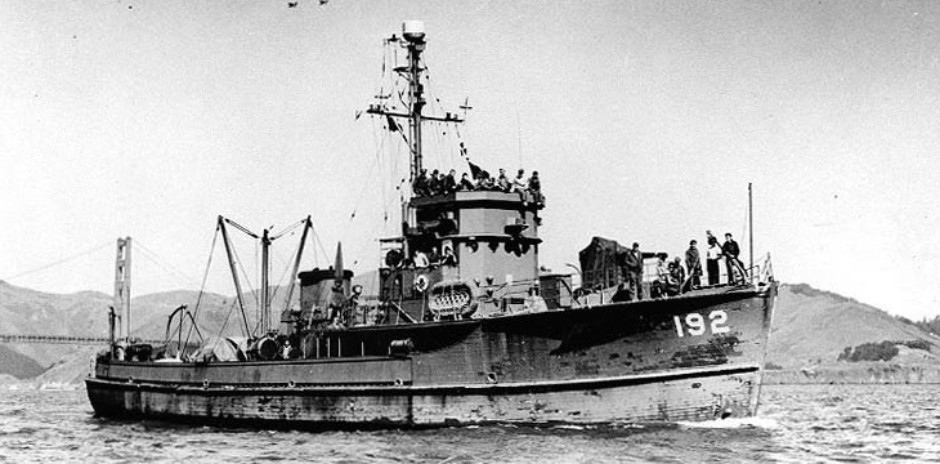
Condor, seen after the war.
0508hrs: the boom defenses across the harbor entrance were opened for Condor and another minesweeper to enter the harbor. It was left open to allow a barge to follow, but the approach of the barge took some time. At 0605hrs the barge finally approached the open boom defenses, being towed by the repair ship Antares. As she approached, a sentry on board the Ward spotted a dark object between the repair ship and the barge, keeping pace at a steady 5kt. As dawn broke the object became clearer, appearing to the observers to be an oil drum but in all likelihood it was the conning tower of one of the attacking Ko-Hyoteki. It must be remembered that the US sailors knew nothing of Japanese midget submarines and would not have fully understood what they were observing. But they did not like whatever it was they were seeing, and being alert for any Japanese aggression (which was of course widely expected in some shape or form) they took the threat seriously.
0645hrs: The Ward’s captain decided to attack the object observed between the Antares and barge entering Pearl Harbor. She accelerated to full speed and opened fire with her 4” guns. The second shot hit the now clearly identified midget submarine at the base of the conning tower, causing it to heel over and start to sink. As it did so, Ward passed overhead dropping depth charges to finish the job.
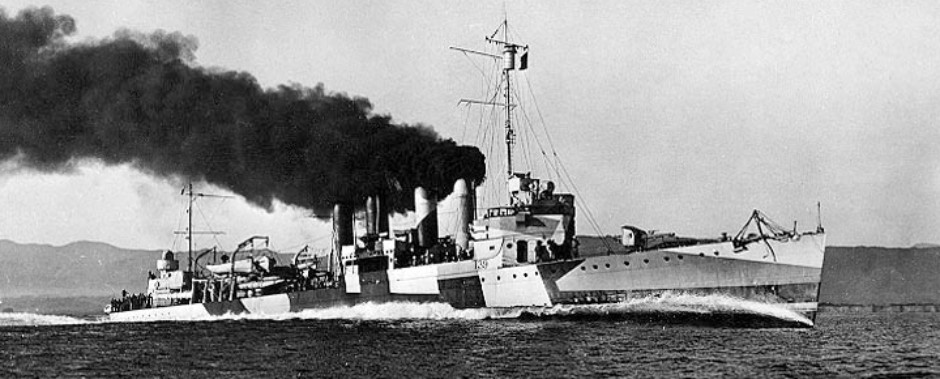
USS Ward (DD-139)
0700hrs: The Ward sighted another suspected midget submarine and attacked it, and reported sinking it. About this time USS Chew reported sinking another submarine, and a US Navy aircraft reported sinking a third.
0711hrs: Reports of Ward’s attack on the midget submarine reached the local Naval Operations Room. The senior officers there displayed a certain lack of urgency, discussing the matter and dismissing it as a false alarm.
0727hrs: The destroyer USS Monaghan got underway to hunt for the reported midget submarines.
0748hrs: The first Japanese aircraft appeared overhead the anchorages, starting their attacks. That Pearl Harbor is under attack was now beyond debate, even among the officers of the Operations Room.
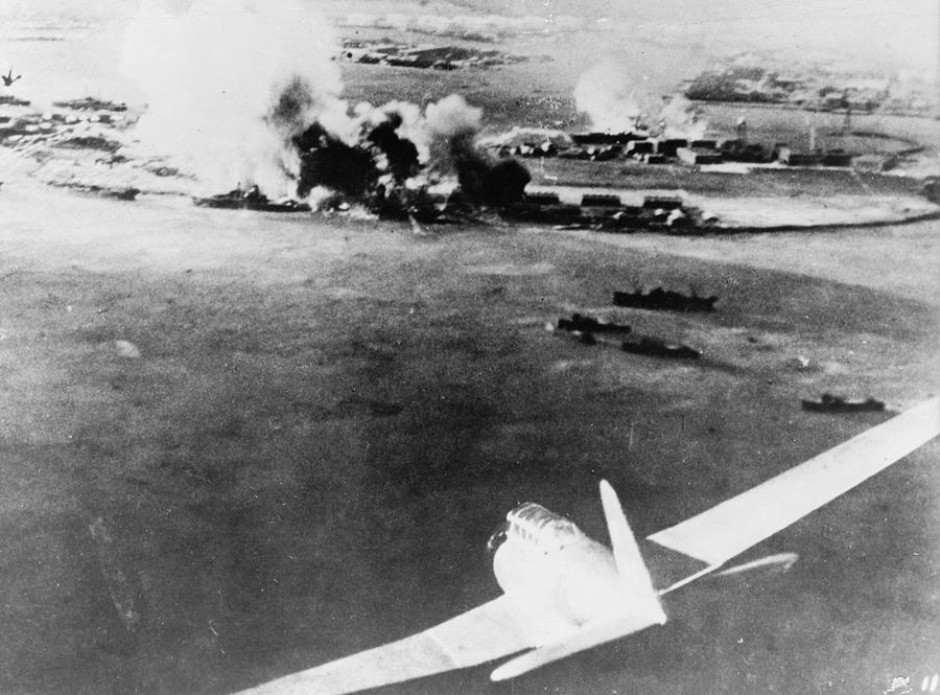
Aerial photograph of the attack taken by a Japanese pilot
0817hrs: The destroyer USS Helm spotted the conning tower of a midget submarine in the North Channel near a buoy. The submarine submerged before Helm’s guns could be brought to bear. Two minutes later, the midget submarine is again sighted, having run aground on Tripod Reef. Helm engaged with her guns but scored no direct hits. Instead the submarine is freed from the reef and submerges.
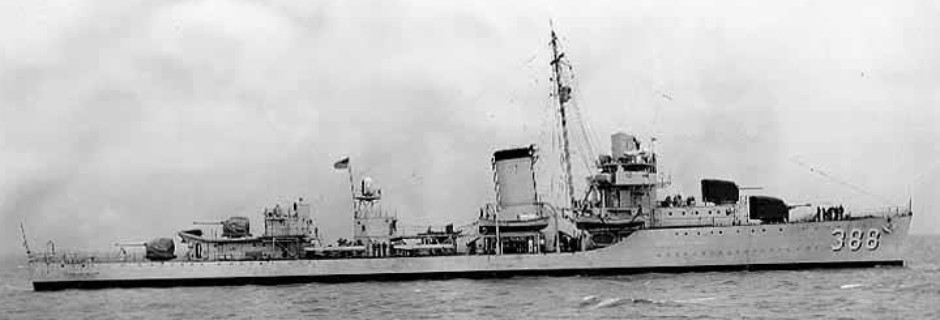
USS Helm (DD-388), c1939
0837hrs: the seaplane tender USS Curtiss, which was moored in the Middle Loch, spotted a periscope off her starboard bow. This is possibly the submarine that the USS Helm engaged earlier. The order was given to her 5” guns to “Fire on submarine”.
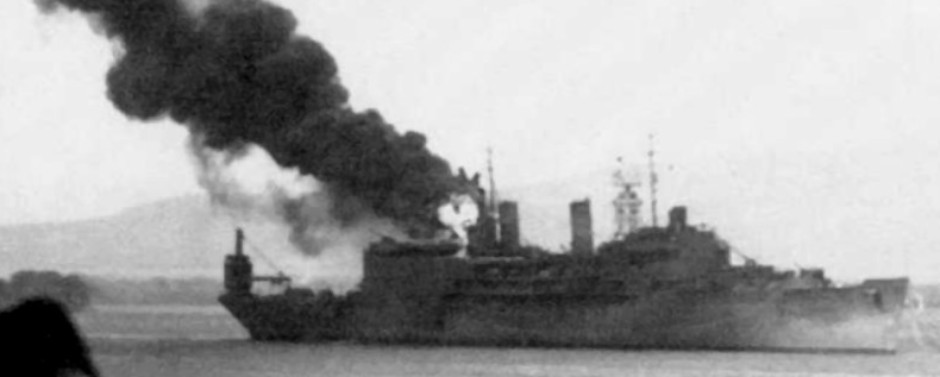
USS Curtiss ablaze during the attack. The damage was not caused by the midget submarine.
0840hrs: As USS Monaghan passed USS Curtiss, the midget submarine broached the surface and was again engaged by Curtiss’ guns, which claimed two hits on the conning tower. The submarine fired a torpedo up the channel towards the light cruiser USS Raleigh but the torpedo missed, exploding on the shoreline. The midget submarine then fired its second torpedo, which also missed. A lot of good things have been said about the design up until now, but one of the shortcomings of the Ko-Hyoteki now became apparent. The design was incredibly long with the torpedoes in the nose and only rear hydroplanes because bow planes were not fitted in case they fouled on nets. Therefore maintaining trim was always difficult and generally involved moving lead weights around. There was an electrically-pumped 90 gallon (345lt) trim tank under the battery but this could not be filled very quickly. The consequence was that when the torpedoes were fired the submarine was thrown out of trim and the nose rose sharply like a handgun being fired, broaching the surface. This was conspicuous. To make matters worse, it usually started a porposing effect with the nose first diving and the contra-rotating propellers being lifted to the surface at the rear, throwing up a massive plume of water.
The Monaghan then rammed the midget submarine, lifting it out of the water and it was then carried down her side and fell off the stern, where it was depth charged.
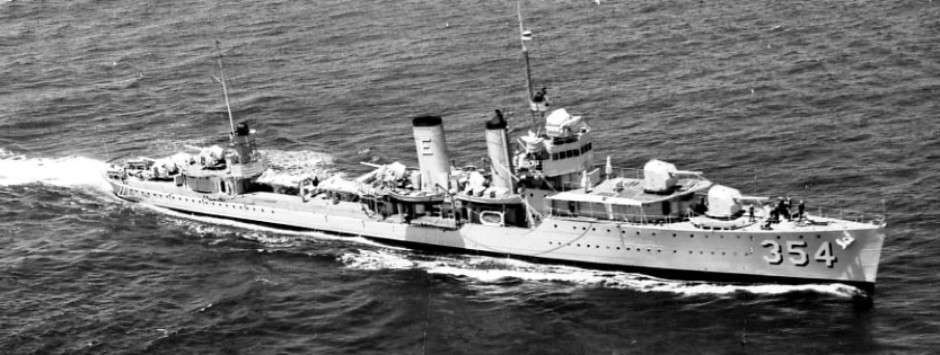
USS Monaghan, seen in 1938.
0950hrs: The destroyer USS Blue’s sonar detected a submerged contact 12 miles (17km) southeast of the harbor entrance (vicinity 21° 11’ 30” N, 157° 49’ 45” W). The target was depth charged and oil and bubbles were seen in the water. It was felt that the submarine was definitely sunk.

USS Blue (DD-387), seen in 1942.
At approximately 1015hrs the cruiser USS St. Louis was narrowly missed by two torpedoes fired from a midget submarine which had moved down the South Channel towards the sea. USS Blue reported having seen the midget submarine heading for the St. Louis suggesting the incident took place outside the harbor marker buoys. USS Blue depth charged the area until 1030hrs, reporting another possible submarine kill. St. Louis then continued seaward in an effort to locate the Japanese Fleet.

USS St. Louis (CL-49), seen in 1942.
Fate of the 5 Ko-Hyoteki
It is impossible to accurately reconcile the above accounts with all five midget submarines. At least two seem to have penetrated the inner harbor. One submarine (HA-19) possibly the one that had been attacked by USS Helm, was found the next morning stranded on a reef off Bellows Field, Waimanalo which is on the other side of the island, a distance of at least 21 miles (35km) by sea.
For hours the two crewmen remained locked inside, stripped naked to cope with the heat and humidity of the confined space of the submarine and knocked about by the waves, they quickly became dazed and disorientated. Eventually the crew abandoned the sub, with the captain being washed ashore and taken prisoner and the NCO being washed out to sea where he drowned. This occurred near Bellows Field and the Army Air Corps attempted to bomb it. All they succeeded in doing was to dislodge the wreck from the reef. Eventually the scuttling charges were made safe and she was dragged ashore and carefully studied giving the first insights into the Ko-Hyoteki midget submarine.
\
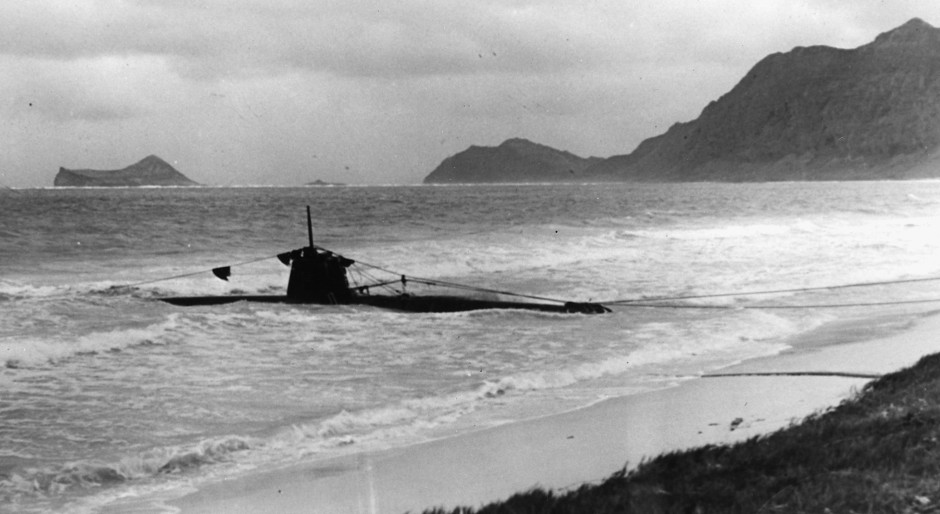
HA-19 during and after recovery by US Navy near Bellows Field
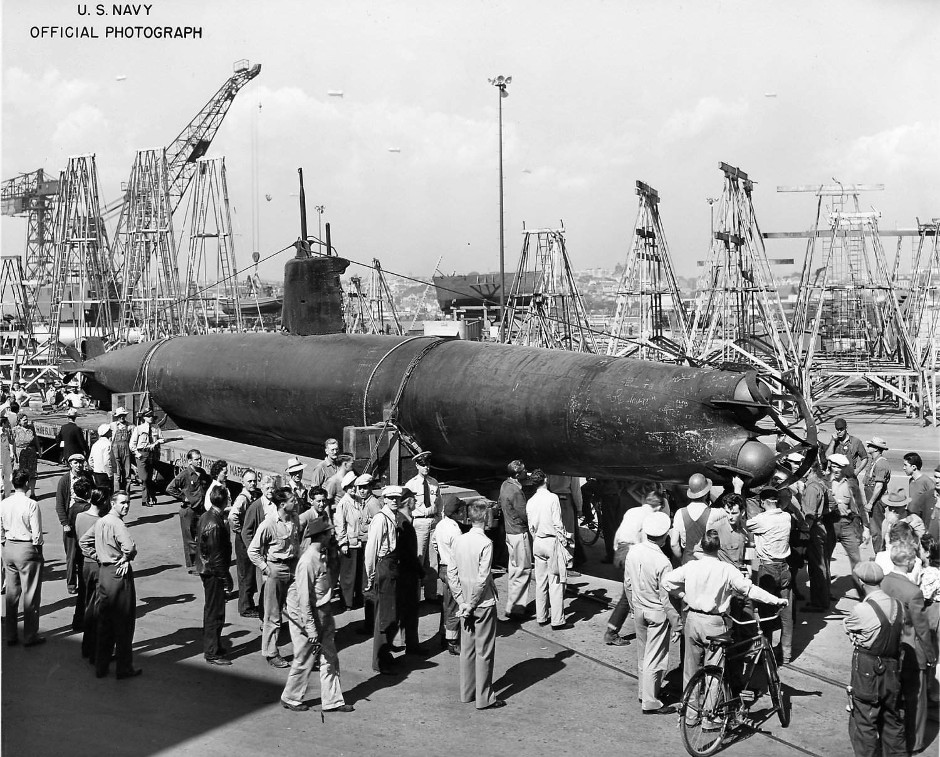
Another submarine wreck was found in 1960 by scuba divers near Keechi Lagoon in Honolulu Harbor. This was in good condition but had been abandoned by its crew, who were never found.
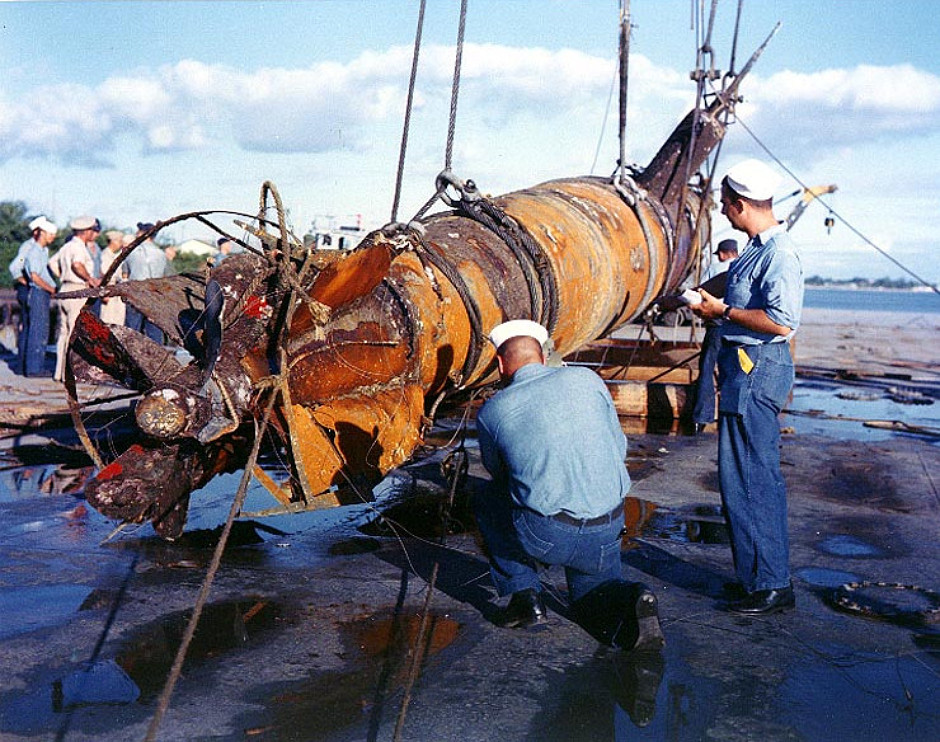
Another wreck was found in 2002 five miles outside the harbor entrance.
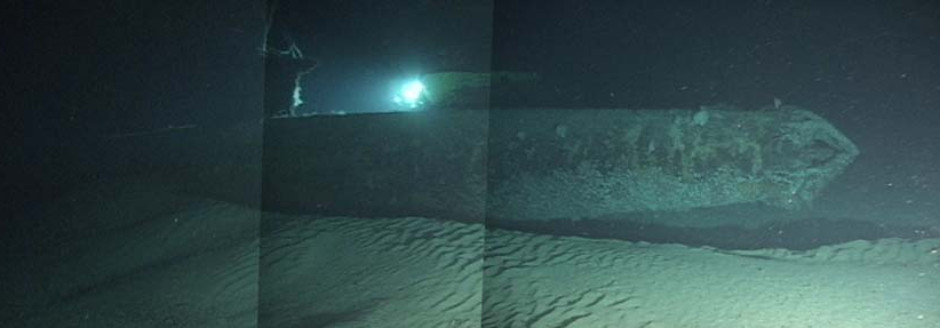
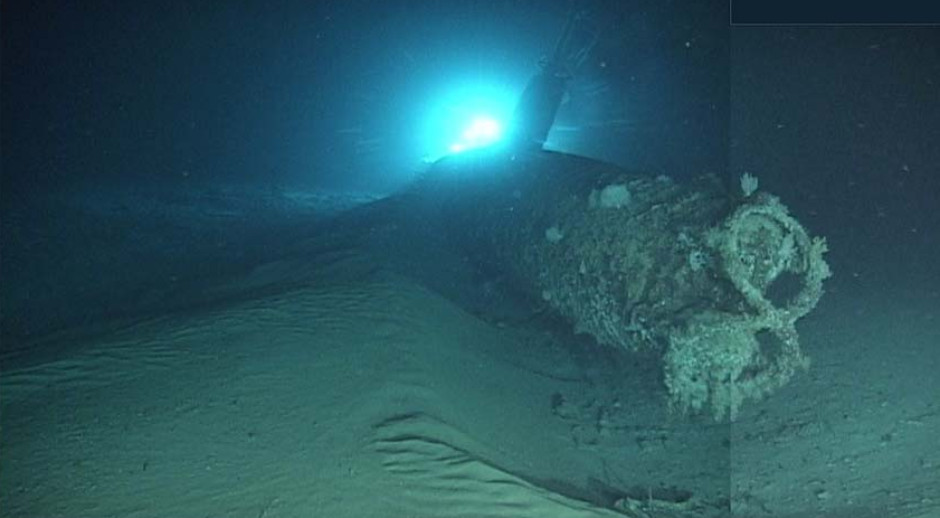
Photos by Terry Kerby, from soest.hawaii.edu
Taking stock
The overall attack on Pearl Harbor was, at least in tactical terms, a major success for the Japanese. The strategic aspect is much debated, but taken on its own the attack was unparalleled in naval history. Half the US Navy battleship fleet in the Pacific were wiped out and the other half seriously damaged. For a time, the US Navy had limited resources with which to stop the Japanese expanding south into the South Pacific and Indian Ocean.
Taking stock of the success however, it would be reasonable to conclude that the midget submarines did not play a major role in the attack. Every ton of iron sunk or damaged was accomplished by aircraft. Of the five midget submarines, only two appear to have fired their torpedoes, and it seems likely that there were no hits. There is a photograph taken from one of the IJN aircraft during the attack which appears to show a midget submarine firing its torpedoes at the USS West Virginia.
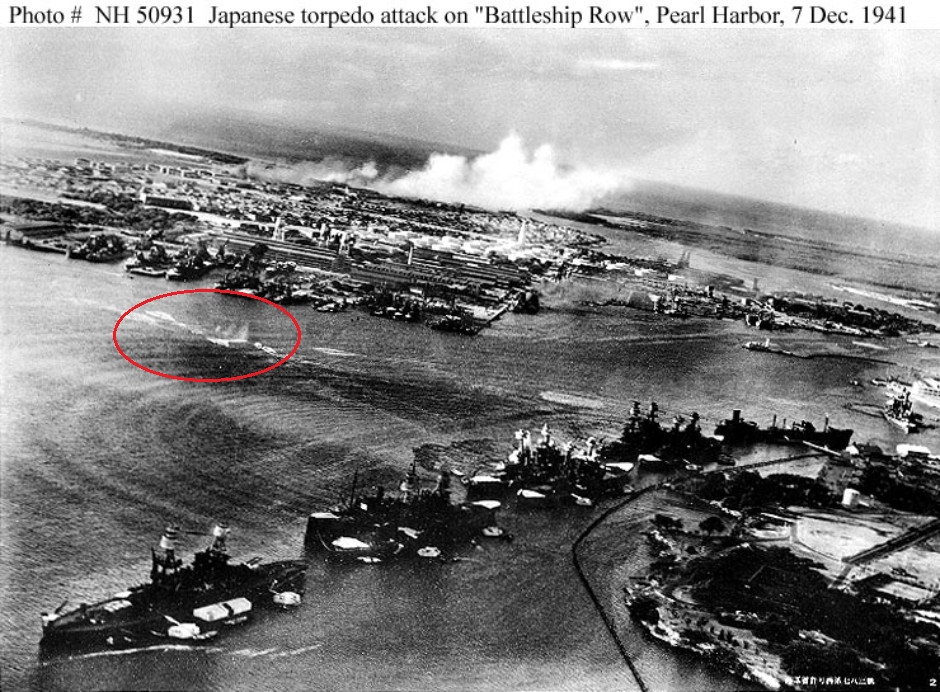
The torpedo did not explode, and there is documentary evidence that at least one unexploded midget submarine torpedo, which was different from those carried by aircraft during the raid, was found after the attack. Some believe that the photograph is evidence that the midget submarine found in 2009, actually penetrated the harbor.
Experts surmised that it was then scuttled by its crew, and subsequently found by the US Navy whilst salvaging a later disaster in 1944, and simply dumped where it is now. This is not an unreasonable scenario, but difficult to prove.
The Ko-Hyoteki went on to be used in other operations against the British and Australans and scored a major success. In many respects it was a very impressive and well-engineered craft and should not be confused with the desperate suicide craft produced later in the war.
Related articles (Full index of popular Covert Shores articles)

 Japanese Ha201 Sen-Taka-Sho fast attack submarine of WW2
Japanese Ha201 Sen-Taka-Sho fast attack submarine of WW2

 WW2 German Delfin midget submarine with AIP
WW2 German Delfin midget submarine with AIP

 Mignatta first human torpedo
Mignatta first human torpedo

 USS X-1 X-Craft
USS X-1 X-Craft

 XLUUV armed extra-large UUV
XLUUV armed extra-large UUV







